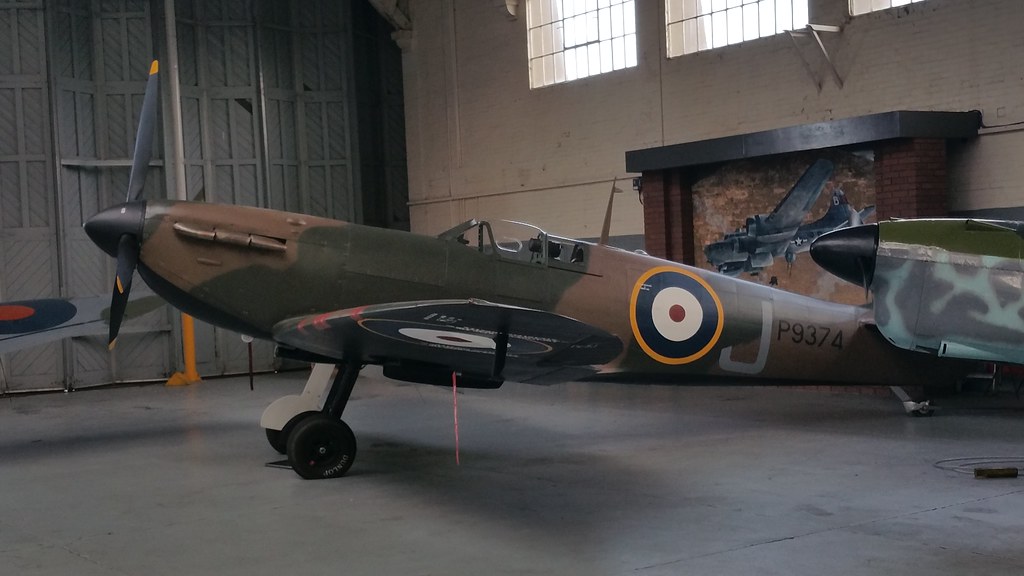#Mid-Engined Mustang Prototype
Explore tagged Tumblr posts
Text

The Forgotten Mach 2: Ford's 1967 Mid-Engined Mustang Prototype

The Forgotten Mach 2: Ford's 1967 Mid-Engined Mustang Prototype
In the Swinging Sixties, Ford's promotional photo featured a stylish couple beaming with joy as they prepared to take a ride in the Mach 2, essentially a mid-engined Mustang. This sleek, closed coupe boasted a 289 V8 engine, ZF 4-speed transaxle, and amenities like a radio and heater.
"Wait a minute", you may be thinking, if you're old enough to remember the Sixties, or if you've been reading this blog for awhile. "Wasn't there a mid-engined Mustang before there was any other kind?" Well, yeah, there was a drivable concept car based on the front-drive German Ford Taunus V4 powertrain, the Mustang 1*, but that was in 1962, and the roofless projectile seemed to be aimed mostly at SCCA racers ...
The Mach 2's story began in 1966, when Ford's Total Performance program aimed to infuse the GT40's mid-engined glamour into a production car. A Mustang convertible chassis was transformed into a concept chassis by Kar Kraft, incorporating Mustang front suspension, front disc brakes, and Galaxy rear drums. The independent rear suspension was borrowed from engineer Klaus Arning's patented multi-link design for Mustang 1.
Two running prototypes were built, with fiberglass bodies styled by Gene Bordinat's team. The first, a white car intended as an SCCA-ready weekend racer, suffered from chassis flex, while the second, a red example, had a reinforced chassis. The red Mach 2 was showcased at auto shows and featured in car magazines.
With a 107-inch wheelbase, similar to the new Corvette C8, and a weight of around 2,600 pounds, the Mach 2's performance was lively. Ford envisioned pricing it around $7,500, slightly above the Shelby AC 427 Cobra.
However, the Mach 2 program was ultimately scrapped. Ford's success with the Mustang and Shelby's modified versions meant that the Mach 2 was relegated to the sidelines. The white test car was crushed, and the red prototype was returned to Kar Kraft, disappearing from public view.
Rumors of the red Mach 2's fate have persisted, with some speculating that it may still be hidden away, waiting to be rediscovered. The possibility of finding this forgotten prototype has captivated car enthusiasts, offering a glimpse into an alternate history of American automotive innovation.

1967 Ford Mach 2

1967 Ford Mach 2

1967 Ford Mach 2

1967 Ford Mach 2
The 1967 Ford Mach 2 was a mid-engine sports car concept that was never mass produced. It was a two-seater with a GT style, low-sloping hood and front fenders, with a body made of fiberglass. Ford built the first one which was based on a shortened version of the 1966 Mustang convertible floor pan. Two more were built by Kar Kraft based on 1967 Mustangs and powered by a 289ci high performance engine mounted in the middle of the car. It had a five-speed manual transmission, independent rear suspension, and adjustable pedals derived from the 1962 Mustang-I.
Two fully functional prototypes were built:
• Red prototype: The production car candidate, with a revised engine cradle, adjustable Koni shocks, and a redesigned front end
•White prototype: A development mule for racing, with a modified 289, competition-spec components, and a lighter fiberglass body.
The Mach 2 was extensively tested, but the results were not encouraging. The road car handled well, but generated too much body roll at high speeds. The race car's chassis was not stiff enough, distorting under heavy loads. By the fall of 1967, Ford's designers had shifted their focus to the Mach 2A, and the three Mach 2 prototypes were left with Kar Kraft for disposal.
209 notes
·
View notes
Text
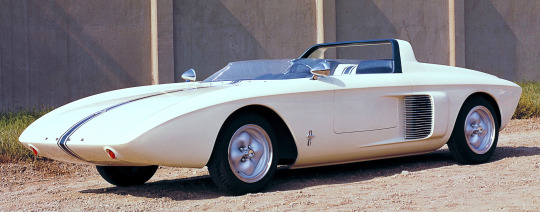
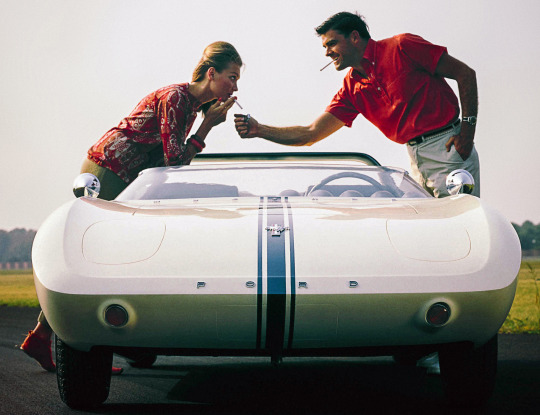
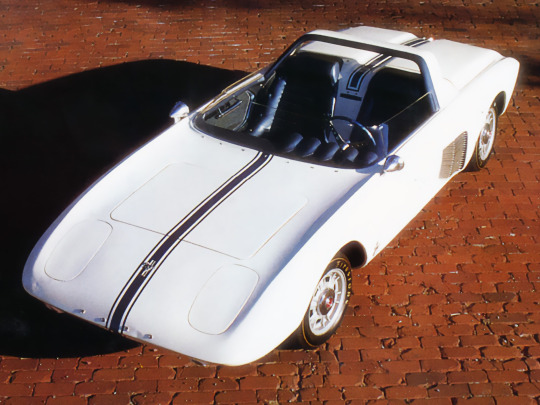
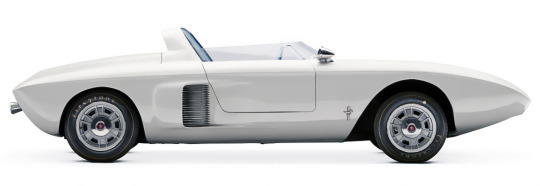
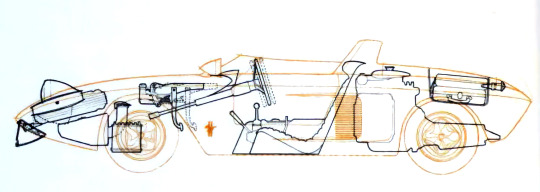
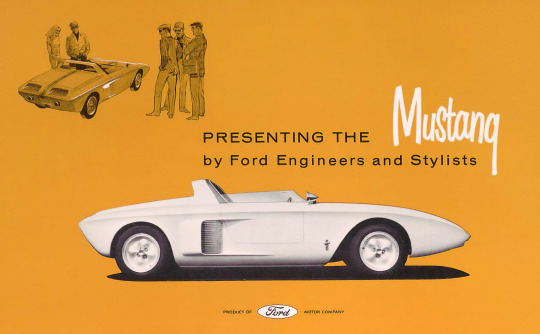
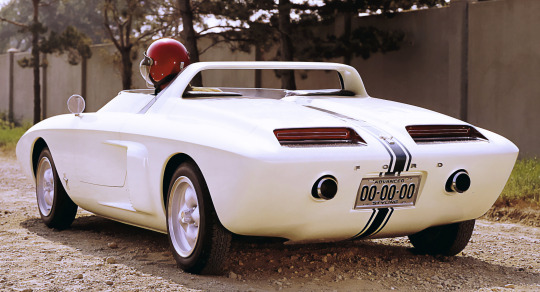
Ford Mustang I Concept, 1962. The original Mustang proposal was a 4 metre long mid-engined V4 roadster designed by John Najjar and Phil Clark (who also came up with the name) in Ford’s advanced styling studio. Only the name and the running horse logo went on to be used on the production car
#Ford#Ford Mustang#Ford Mustang 1#concept#design study#V4#mid-engine#prototype#1962#open roof#concealed headlamps#retro futuristic
353 notes
·
View notes
Text
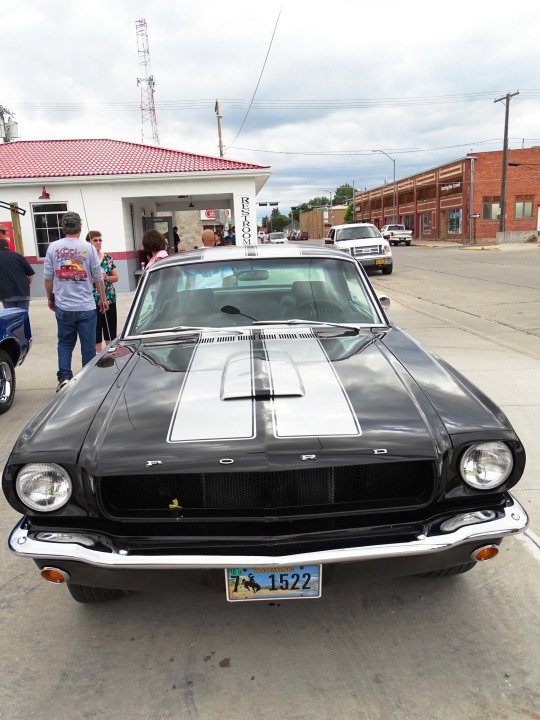
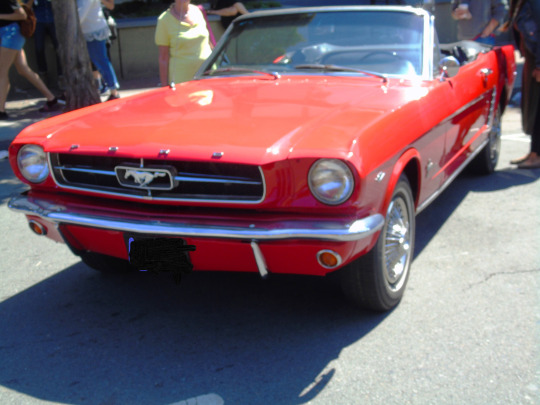
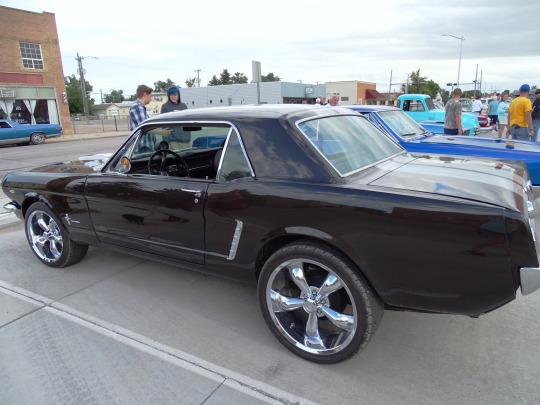
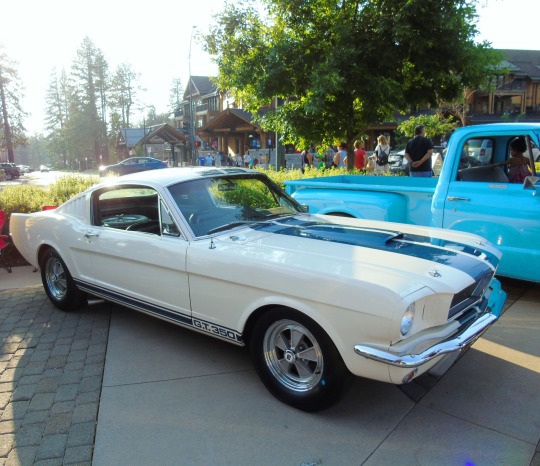
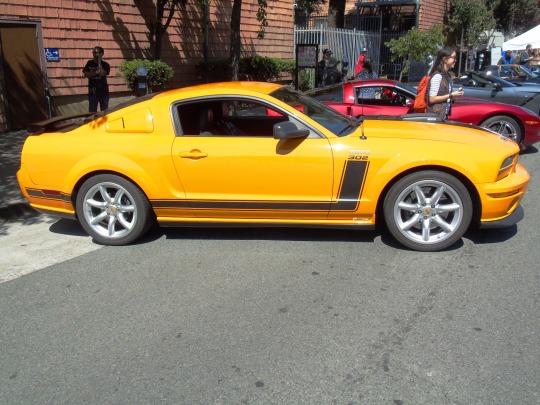
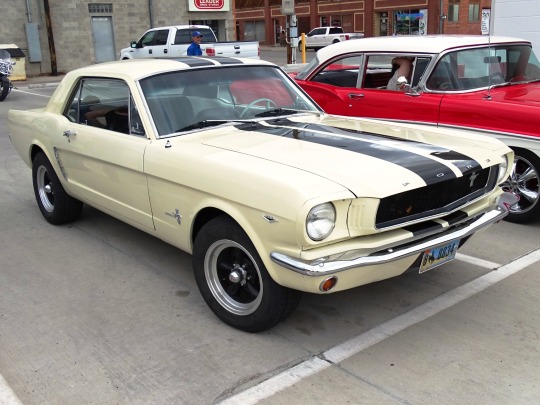
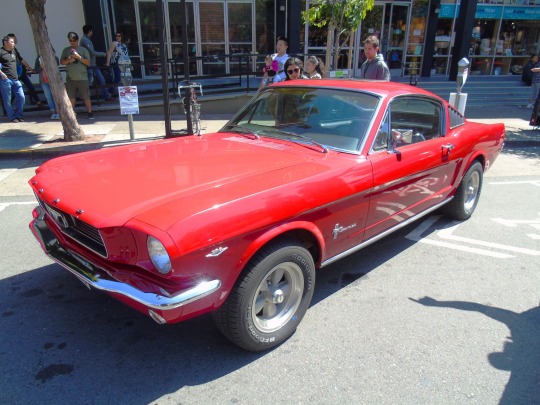
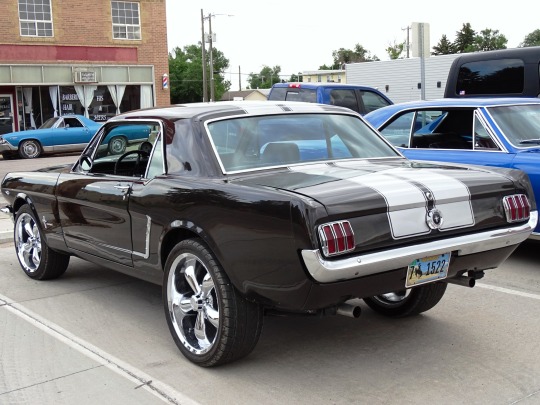
National Ford Mustang Day
Look for an event or showcase near you to admire Ford Mustangs throughout the ages, and learn about the history of this popular every-mans sports car.
It’s got sleek lines and a powerful engine, its name speaks of wild places and adventurous times. For generations it was the car of choice for action heroes and spies alike, even James Bond drove one in Goldfinger.
For some it was the very flavor of summer sunsets and nighttime drives on youth’s misadventures, but it always brought them home safely.
We’re talking about the Ford Mustang, of course, and National Ford Mustang Day celebrates this incredible and iconic piece of American engineering.
Celebrating National Ford Mustang Day
All over the country (and indeed, all over the world) festivals and celebrations are held that honor this vehicle. 60 years of different models of this line are brought out by enthusiasts, most maintained in impeccable shape, standing as an icon of their time.
You can find these with a simple web search, and then go out and see the march of time and technology as it reshaped the overall appearance of the Mustang while leaving its underpinning sense of aesthetic and purpose untouched.
National Ford Mustang Day presents an opportunity to really appreciate what American Engineering can do, and how a car can change the face of the automotive industry.
History of National Ford Mustang Day
The Ford Mustang was first introduced to the world in April of 1964. The World’s Fair was in full swing, and this car was Ford’s introduction as the car of the future.
This introduction of the Mustang also was the introduction of the first Pony Car, to wit, a line of small sporty cars with sleek lines and an affordable price-tag.
Sales of the Mustang proved that this car was going to become an American favorite, with well over 400,000 sales in the first year it was in production, an unprecedented success for an unprecedented vehicle.
The muscle car of the time was the Thunderbird, and that beauty was the one that every serious sports car fanatic wanted to own. The Mustang came into existence with the idea not of replacing that vehicle, but instead putting its like within reach of the working class.
Such was its popularity that over 500 clubs celebrating the Mustang came into existence within just 3 years of its release. This is the kind of fanaticism that’s usually saved for classic cars, but the Mustang just rolled right in and took its place as a new classic right off the bat.
Such was the popularity of the Mustang that 60 years later over 9 million of them have been sold. National Ford Mustang Day celebrates this vehicle that came out of nowhere to become an American institution.
National Ford Mustang Day FAQs
Why does the Mustang’s emblem show a horse running to the left?
The Mustang’s iconic emblem features a galloping horse facing left, symbolizing freedom and movement.
Designer Phil Clark, who was left-handed, sketched it this way, and Ford kept the design. The leftward gallop contrasts with traditional horse emblems, making it stand out.
What was the Mustang’s connection to the Apollo space program?
During the Apollo space missions, Ford gifted astronauts with custom Mustangs, cementing the car’s association with American innovation.
These models featured unique designs tailored to each astronaut’s preference. This gesture linked the Mustang to the spirit of exploration.
What inspired the design of the first Mustang prototype?
The Mustang I prototype, developed in 1962, featured a mid-engine design and lightweight aluminum body.
Ford engineers were inspired by European sports cars, aiming to create something sleek and affordable. Though it never went to production, it laid the groundwork for the Mustang’s debut.
What unusual name was considered for the Mustang?
Before settling on “Mustang,” Ford seriously considered naming the car “Cougar.”
Some early prototypes even carried a cougar logo. However, “Mustang” prevailed, aligning better with the spirit of the car and its nod to speed and freedom.
How did the oil crisis of the 1970s reshape the Mustang?
The 1970s oil crisis forced Ford to rethink the Mustang, resulting in the smaller, more fuel-efficient Mustang II.
This redesign was a departure from the muscle car’s traditional image but appealed to consumers facing skyrocketing fuel prices. It became one of the decade’s best-selling cars.
What’s the connection between the Mustang and the James Bond franchise?
A Mustang featured prominently in the 1964 James Bond film Goldfinger, driven by the iconic villainess Tilly Masterson.
This appearance introduced the car to international audiences, boosting its global popularity. The stunt-filled chase scenes highlighted the car’s sporty design and performance.
How do Mustang clubs celebrate Ford Mustang Day?
Mustang enthusiasts host parades, cross-country drives, and car meetups to celebrate.
Some groups even create themed events, such as the “Mustangs and Airplanes” show in Florida. International clubs replicate these celebrations, reflecting the car’s universal appeal.
What’s a little-known fact about the Mustang’s early marketing?
Ford marketed the Mustang as a “car to personalize,” offering over 70 options for customization at launch.
Buyers could choose from a wide array of colors, interiors, and performance upgrades. This approach set it apart, attracting younger, trend-conscious buyers.
What unique role did the Mustang play in 1960s pop culture?
The Mustang became a symbol of rebellion and youth, appearing in countless movies and songs.
Artists like Wilson Pickett and Chuck Berry referenced it in their music, cementing its place in American culture. It wasn’t just a car—it was a lifestyle statement.
Why is the Mustang often called the original “pony car”?
The Mustang is considered the first “pony car,” a class of affordable, sporty coupes with long hoods and short rear decks.
The term “pony car” originated from the Mustang’s name and branding. Competitors like the Chevrolet Camaro soon followed, but the Mustang started the trend.
Source
Ford Mustang was formally introduced on April 17, 1964.
#Ford Mustang Day#FordMustangDay#car#introduced#17 April 1964#USA#anniversary#US history#technology#original photography#San Francisco#South Lake Tahoe#California#summer 2017#vacation#travel#road trip#tourist attraction#architecture#Torrington Cruise Night#Wyoming#summer 2019#Nihonmachi Street Fair#engineering#cityscape#InternationalFordMustangDay#landmark
1 note
·
View note
Text
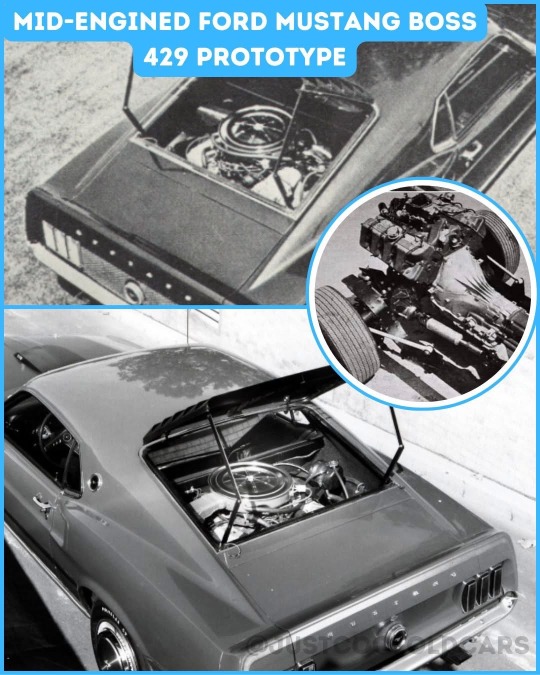
𝐁𝐚𝐜𝐤 𝐢𝐧 𝟏𝟗𝟔𝟗, 𝐅𝐨𝐫𝐝 𝐛𝐮𝐢𝐥𝐭 𝐚 𝐨𝐧𝐞-𝐨𝐟𝐟 𝐩𝐫𝐨𝐭𝐨𝐭𝐲𝐩𝐞 𝐭𝐡𝐚𝐭 𝐟𝐥𝐢𝐩𝐩𝐞𝐝 𝐭𝐡𝐞 𝐬𝐜𝐫𝐢𝐩𝐭 𝐨𝐧 𝐭𝐡𝐞 𝐜𝐥𝐚𝐬𝐬𝐢𝐜 𝐁𝐨𝐬𝐬 𝟒𝟐𝟗 𝐌𝐮𝐬𝐭𝐚𝐧𝐠.
Maybe this was a prelude to the Pantera ?
Known internally as the LID Mustang—short for Low Investment Drivetrain—this project aimed to fix the production model’s notorious weight distribution problem.
Instead of packing the heavy Boss 429 V8 up front, Ford’s engineers reversed the engine and mounted it over the rear wheels.
A Clever, Cost-Effective Makeover
Working with their Special Vehicles unit and a local Detroit skunkworks group called Kar Kraft, Ford took a standard Boss 429 engine paired with a C6 automatic transmission and installed it in a custom, removable rear subframe. A specially built transfer case rotated the power 180 degrees, feeding a modified 9-inch rear axle. This clever setup shifted the weight balance from a 60/40 front-to-rear split to a more promising 40/60, reducing wheelspin and potentially improving handling.
An Experiment That Didn’t Take Off
Despite the improved weight distribution, the mid-engine layout didn’t deliver a significant performance boost. With little more than reduced wheelspin to show for it, Ford decided not to pursue the idea further. At one point, reports in Motor Trend suggested the lone prototype was headed for the crusher at a Detroit-area salvage yard.
A Mysterious Disappearance
Recent whispers from credible Ford insiders, however, have added a twist to the tale. After its test program, the LID Mustang was parked at the Dearborn Proving Grounds with other test mules. Rather than being scrapped, the car seemingly vanished—leading some to believe it might be hidden away in a private garage somewhere in Dearborn or Allen Park, waiting for its moment to reemerge.
This story of wild innovation remains one of Ford’s most intriguing “what if” moments—a reminder that sometimes even the boldest experiments can slip quietly into legend.
0 notes
Text
Stuart Banham Following
📌 Supermarine Spitfire MK.IA Fighter Aircraft (P9374) IWM Duxford.
The Supermarine Spitfire is one of the most famous Aircraft of World War Two, and certainly the most famous Fighter Aircraft of the 20th century, originally developed in the mid-1930's, the Spitfire was designed by Supermarine Aviation Works to fill Air Ministry specification F7/30, calling for a 'Modern Fighter' capable of flying at 250 mph. Although this isn’t all that fast by modern standards, it was like a lightning bolt compared to the earlier Biplane Fighters that had been used in the preceding World War.
As a result of the sheer volume of engineering and production difficulties that had to be overcome, the Aircraft that would become the 'Spitfire' underwent a series of re-designs and name changes, before receiving approval to develop a flying prototype using the Type 300 design.
Over the course of its 10 year (1938 to 1948) production run, over 20,000 Spitfires were built in a wide variety of configurations. Most were powered by the iconic 'Rolls-Royce Merlin Engine' a 27 liter V12 Aero Engine that saw broad use in a multitude of Aircraft during and after World War Two, including a Packard-Built variant that powered the North American P-51 Mustang. During World War Two, the Supermarine Spitfire became famous among the people on both sides of the conflict, and the sight of an airborne Spitfire on an intercept course would make the blood of any Luftwaffe Pilot run cold ‼️
Supermarine Spitfire P9374, model F Mk.1a, operational with 92 Squadron was shot down, and force landed on the beach at Calais, France, on 24th May 1940, recovered from the beach in September 1980, it was stored at the 'Musee del’Air' Vannes, France, until 1996. Purchased by Simon Marsh and Tom Kaplan it was registered as G-MKIA and stored pending restoration to an airworthy status. The aircraft arrived at 'Historic Flying Ltd' in 2006 from its storage place on the Isle of Wight, and has been the subject of a long and meticulous restoration. The intention was to return the P9374 back to flying status in as authentic a condition as possible. While other projects were completed and moved on, P9374 was hiding at the back of the hangar, slowly coming together.
Now looking resplendent in original markings, the first Engine runs took place on Friday 17th June 2011, a proud moment for all involved, and P9374 took flight on 30th August 2011 and it is the earliest mark of Spitfire flying anywhere in the world.
Supermarine Spitfire P9374 was one of a batch of 183 Aircraft built by Supermarine Ltd (Vickers-Armstrongs Aircraft Ltd) under contract number 980385/38 from the Air Ministry. After factory test flying P9374 was delivered to RAF Hornchurch on 2nd March 1940 and then joined 92 Squadron at RAF Northolt on 6th March 1940, on 24th May 1940 P9374 was hit in action and forced to land on the beach near Calais where it remained gradually consumed by the shifting sands until re-emerging in 1980. A long restoration and rebuild was completed by the 'Aircraft Restoration Company' at the Imperial War Museum Duxford, finally returning to the skies on 30th August 2011. It is a Low Wing Monoplane Fighter Aircraft with a fuselage of stressed-skin construction, the wing assemblies with eight de-activated Browning Machine Guns.
Specifications:-
▪︎Role: Fighter / Interceptor Aircraft
▪︎National Origin: United Kingdom
▪︎Manufacturer: Supermarine Aviation Works
▪︎Designer: R. J. Mitchell
▪︎First Flight: 23rd February 1940
▪︎Introduction: 4th August 1938
▪︎Retired: 1961 (Irish Air Corps)
▪︎Primary User: Royal Air Force / Royal Canadian Air Force / Free French Air Force / United States Army Air Forces
▪︎Produced: 1938 to 1948
▪︎Number Built: 20,351
▪︎Variants: Supermarine Seafire
▪︎Current Owner: Historic Aircraft Collection Ltd
▪︎Status: Airworthy
▪︎Length: 29ft 11in
▪︎Wingspan: 36ft 10in
▪︎Engine: Rolls-Royce Merlin III
▪︎Maximum Speed: 374mph
▪︎Range: 470 miles
▪︎Armament: 2x20mm Hispano Cannons and 4x .303 Vickers Machine Guns.
Via Flickr
2 notes
·
View notes
Text
FLIGHTLINE: 201 - US ARMY VTOL EXPERIMENTS # 3 - OTHER AVENUES
The US Army, despite limitations established after the USAF was established, continued to experiment with VTOL aircraft into the 1960s
BACKGROUND Recognizing the potential of winged heavier-than-air flying machines first demonstrated by the Wright Brothers in 1903, the US Army Signal Corps established the Aeronautical Division, Signal Corps on 1 August 1907 to train pilots, and develop and operate aircraft. Operations expanded and the name changed several times between then and 1941, when the US Army Air Corps was renamed the US Army Air Forces just prior to America's entry into WWII. During the post-war reorganization of the military and intelligence agencies formally adopted under the National Security Act of 1947, the USAAF was established as a separate branch under the National Military Establishment (renamed the Defense Department in 1949). Further refined by the 1948 Key West Agreement and the 1952 Pace-Finletter Memorandum of Understanding (MOU), the USAF was established as the primary operator of fixed wing aircraft for both offensive (fighter, bomber, attack), defensive (interceptor, long range recon) and support/transport duties, while the US Army's fixed wing fleet was limited to theater-level transport and utility, observation/spotting, command and control of Army forces, and medivac. Additionally, the Army was freed from weight restrictions and was allowed to develop helicopters for attack, transport and other roles. Seeking ways to develop more capable fixed-wing craft within those restrictions (or to side-step them entirely...), the Army began looking into various vertical takeoff and landing (VTOL) technologies in the 1950s, requesting proposals for one-man platforms, flying jeeps, and larger aircraft that could be adapted for recon, transport or perhaps even attack missions.
VERTOL VZ-2 On 15 April 1956 the Army and Navy signed a joint contract with Vertol (formerly Piasecki) to build a demonstrator to test tilltwing technology, that is, an aircraft built to allow the wing and engines to be tilted such that the thrust is pointing downwards, allowing the aircraft to take off vertically, then tilt the wing back down for forwards flight. The resulting Model 76 was a skeletal framework of aluminum tubing with a bubble cockpit at the front (both the frame and cockpit were adapted and built from components for the Bell Model 47 to reduce costs) with the high-mounted wing at mid point and a t-tail at the rear. A fixed taildragger landing gear was fitted, while a small wheel under the cockpit was also provided in case of difficulties. The Model 76 was 26' 5" long and 15' tall, with a wingspan of 24' 11". The three-bladed, variable-pitch props, each 9' 6" in diameter, were powered by a single Lycoming T53-L-1 turboshaft, rated at 700shp, which was mounted within the fuselage. A complex series of shafts and linkages connected the engine with the main rotors/propellers, as well as to a pair of smaller ducted fans, one each in the horizontal and vertical stabilizer, which were used to control yaw and pitch while in hover. The rotors, which were interconnected for safety, were also used to adjust pitch in hover, while more traditional aircraft flight surfaces would take over once in horizontal flight. Empty, the VZ-2 weighed 2,500lbs, while max weight was 3,700lbs.
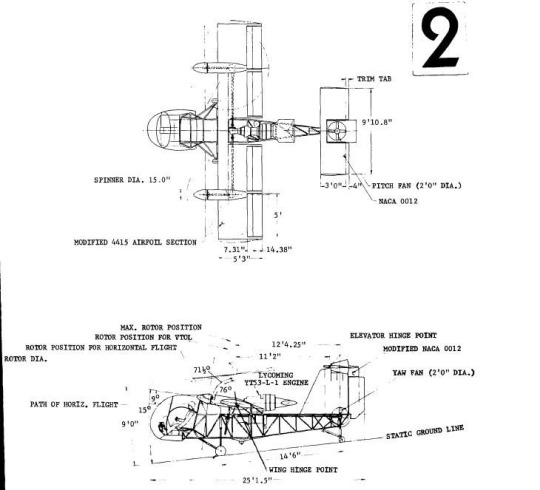
-Line drawing of the Model 76. | Illustration: Boeing Vertol
Vertol delivered the aircraft, designated VZ-2 by the Army, in 1957, with ground testing beginning in April, followed by the first hover flight on 13 April. On 15 July 1958 the VZ-2 completed its first full flight, starting with a vertical takeoff, transitioning to wing-borne flight, then returning to hover mode for a vertical landing. The aircraft proved to be fairly agile, but was slow even in horizontal mode, setting a maximum speed of 210mph and a ceiling of 13,800 feet. Range, not particularly a concern of a research aircraft, was only 130 miles. In addition to the Army and Navy, the VZ-2 was flown by NASA for a time. The craft was retired in 1965, completing 450 flights, which included 34 full transitions. The VZ-2 is currently in storage at the Paul E. Garber Preservation, Restoration, and Storage Facility of the National Air and Space Museum.
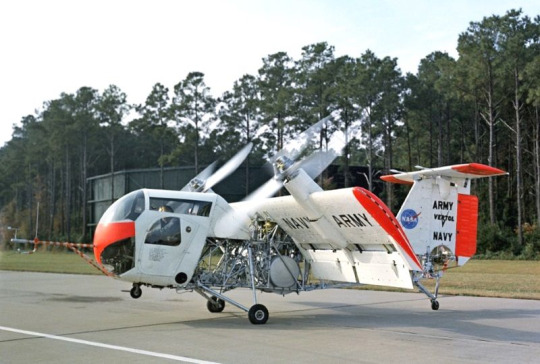
-The VZ-2, resplendent in white and day-glo orange scheme. | Photo: NASA
RYAN VZ-3 VERTIPLANE The Ryan Model 92 Vertiplane, designated the VZ-3RY by the Army, was designed to test the principle of deflected slipstream to enable a fixed-wing aircraft to achieve VSTOL without the complexity of a tilted wing or engine design. Originally built with a tailwheel design, the aircraft was rebuilt after a non-fatal accident in a slightly lengthened form with a tricycle arrangement. The high-mounted wing was fitted with full-width double-slotted flaps and down-turned wingtips that acted to contain and direct the airflow down, allowing the Vertiplane to take off after a 30-foot ground roll at a speed of just 25mph. Power was provided by an Avco Lycoming T53 turboshaft, mounted in the fuselage and shaft-linked to the two nine-foot diameter, three-bladed props. To provide control in a hover, the jet exhaust was fitted with a deflection nozzle. The aircraft could achieve a hover at altitudes up to 3,700 feet, but during testing it was discovered that a low-altitude hover would reingest air from its own slipstream (which possibly caused the crash). Construction of the Vertiplane began in 1957, with maiden flight taking place on 29 December 1958 and the Army completing 21 test flights before the VZ-3 crashed in 1959. Along with the rearranged landing gear, the rebuilt VZ-3 was also fitted with an open cockpit, bringing plane in its final configuration to 27 feet 8 inches long with a wingspan off 23 feet and a height of 10 feet 8 inches. After the rebuild the Vertiplane was handed over to NASA for further testing, and it was officially retired in 1961. In 2018, after a lengthy restoration, the VZ-3 was placed on display at the US Army Aviation Museum.
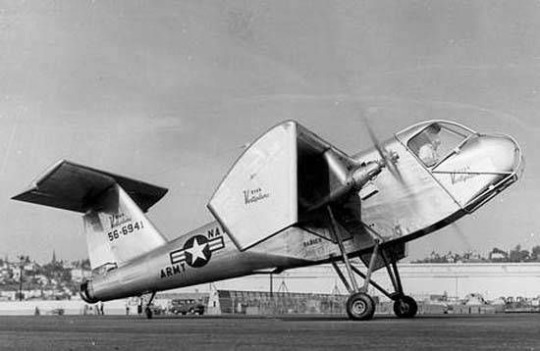
-The Vertiplane as originally completed. | Photo: US Army
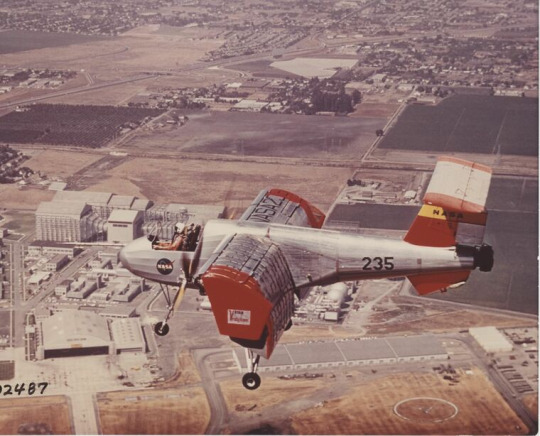
-The rebuilt VZ-3 during NASA testing. The span and length of the flaps at full extension is apparent in this view. | Photo: San Diego Air and Space Museum Archives
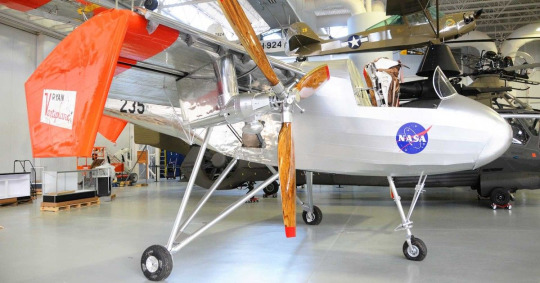
-The Vertiplane in the Army Aviation Museum. | Photo: US Army
DOAK VZ-4 Edmund R. Doak, Jr. was a self-taught aviation engineer and former VP of Douglas Aircraft who in 1940 formed Doak Aircraft. The company served as a subcontractor during WWII, eventually employing 4,000 workers. After the end of the war, Doak proposed a VTOL aircraft to the Army that would have the speed, range and firepower of a fixed-wing aircraft and the ability to take off vertically, hover and land vertically like a helicopter (which would also allow the Army to skirt the restrictions against operating fixed wing attack aircraft). On 10 April 1956 the Army awarded Doak a contract to build a single prototype of their Model 16 for use as a research aircraft. Designated the VZ-4DA and built with serial number 56,9642, the Model 16 was constructed from welded steel tube covered with fiberglass from the cockpit forward and with aluminum sheet over the remainder of the fuselage, which was 32 feet long. The mid-mounted wings were of all-metal construction and had two 5 foot diameter ducted fans on either wingtip, bringing the span to 25 feet 6 inches total. The fans could be moved through 92°, allowing the VZ-4 to take off vertically, fly horizontally, and hover (the fans pointed two degrees aft of vertical in hover to counteract the exhaust of the jet). Initially powered by a single Avco Lycoming YT53 turboshaft of 840shp, a more powerful T53-L-1 of 1,000shp was later substituted. As with the VZ-3, diverter vanes allowed the pilot to direct the thrust of the jet engine to control pitch and yaw in hover. In order to speed construction and cut costs, the VZ-4 utilized components from other aircraft, including the landing gear from a Cessna 182, the seats from a P-51 Mustang, and actuators from a T-33 Shooting Star. Despite being an R&D aircraft, the VZ-4 sat two, a pilot and observer, in tandem seats. The flight controls consisted of a standard stick and rudder, with mechanical linkages and interlocks adjusting the ducts, vanes, tabs and flaps as the aircraft went through all phases of flight. There was no artificial stabilization or power boost system.
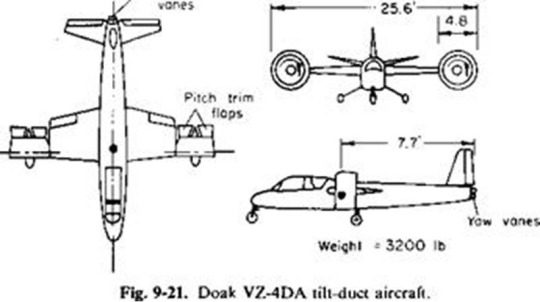
-Orthograph of the VZ-4. | Illustration: Doak Aircraft Company
Doak began ground tests in February 1958, with the Model 16 completing 32 hours of stand testing and 18 of tethered testing before the first free flight on 25 February 1958, then the first full transition flight on 5 May. Following a complete tear-down inspection of the craft, it was shipped to Edwards AFB in October for 50 hours of further acceptance testing. The Army accepted the VZ-4 in September 1959, after which it was transferred to NASA Langley to begin test work on its VSTOL performance.
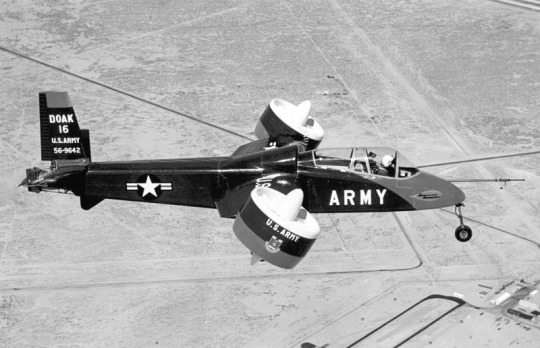
-The VZ-4 over Edwards in 1958. | Photo: US Army
The VZ-4 performed adequately during the Army and NASA tests; demonstrating the ability to hover and shift between horizontal and vertical flight at altitudes of up to 6,000 feet, A maximum speed of 230mph, a cruise speed of 175mph, a range of 250 miles with an an endurance of one hour, and a service ceiling of 12,000 feet. A few vices did crop up, the most serious of which was a tendency to nose-up when going from vertical to forward flight; additionally, STOL performance was less than anticipated. Doak's engineers were confident that they could correct these issues, with a swap to a more powerful T53 turbine being the first step. Before additional measures could be taken however, Doak, hit by financial problems due to a general recession in 1960, laid off 90% of their staff. The VZ-4 program was subsequently purchased by Douglas Aircraft, but by this point the Army had lost interest in the idea as improvements in aerodynamics and engines had produced helicopters which met their needs. The aircraft was transferred to NASA in 1963 and was flown sparingly until 1972, when it was grounded permanently. The VZ-4 was placed into storage at Fort Eustis in 1973 before being donated to the US Army Transportation Museum, where it is now on display.
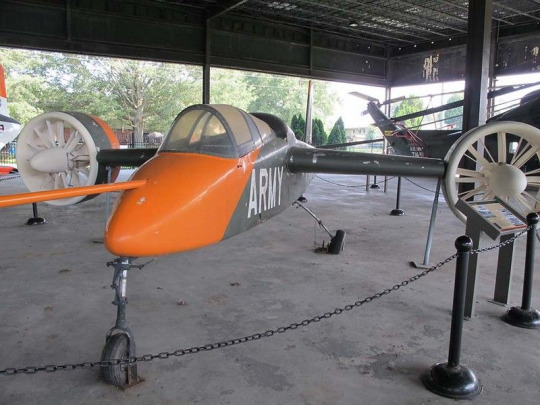
-The VZ-4 on display at the Army Transportation Museum. | Photo: Vladimir Yakubov
FAIRCHILD VZ-5 FLEDGLING Like the Ryan Vertiplane, the Fairchild VZ-5FA was designed to test the principle of deflected slipstream to enable VSTOL flight. Known as the Model M-244-1 by Fairchild, the aircraft was of simple construction, with an open cockpit fuselage nearly thirty-four feet long mated to a high-mounted wing nearly thirty-three feet in span. A GE YT58 turboshaft of 1,032shp drove four small four-bladed props as well as two even smaller props in the tail for pitch and yaw control. In addition to conventional flaps and ailerons for control in normal flight, nearly two thirds of the wing would act as a full-span flap for VTOL flight. Extensive wind tunnel testing at NASA Langley cast doubt on the airworthiness of the Fledgling's design, with the aircraft producing almost enough lift to carry its empty weight aloft, but no fuel, pilot or cargo. The VZ-5 was also determined to be unstable in every flight regime, with violent pitching encountered and the available flying surfaces unable to compensate. Despite this bleak report, Fairchild pressed on and tethered tests began on 18 November 1959. The exact number of tests of the Fledgling are not known but suspected be in the low single digits, and the series only reinforced the conclusions drawn from the wind tunnel testing. The VZ-5 was abandoned before the end of 1959 and was apparently quietly scrapped.
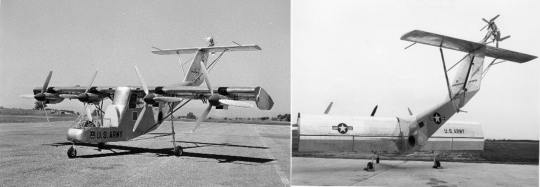
-The VZ-5 from in front and behind. The Fledgling likely never actually took flight, a victim of poor aerodynamics. | Photo: US Army
LOCKHEED VZ-10 HUMMINGBIRD In 1959 the Army awarded a contract to Lockheed for two examples of the VZ-10, an experimental STOVL observation aircraft based on Theodore von Karman's "augmented jet ejector" concept. Under von Karman's concept, jet exhaust was passed through a specially shaped chamber which drew in ambient air from the outside, which in lab tests had proven to increase thrust by two times. Lockheed's design resembled a conventional aircraft 32 feet long with narrow-chord, mid-mounted wings giving it a wingspan of just 25 feet. The interior volume of the fuselage was taken up by two P&W JT12A-3LH turbojets, along with the thrust diverter system. Fed by doors at the top of the fuselage, doors at the bottom would allow exhaust to lift the aircraft, while they could also be closed and allow the aircraft to take off and fly conventionally. Diverted exhaust could also be used to maneuver the aircraft during hover, while conventional flying surfaces were used during normal flight.
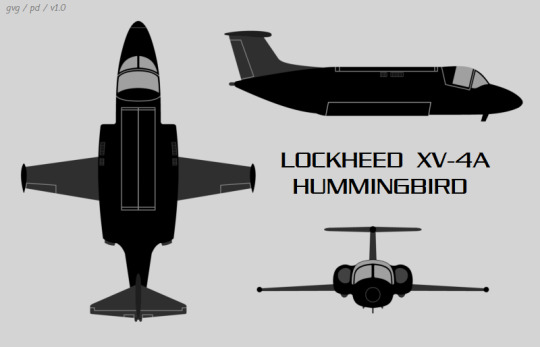
-Orthograph of the VZ-10. | Illustration: airvectors.net
Prior to first flight, the aircraft was redesignated the XV-4, with the maiden flight (conventional) occurring on 7 July 1962. This was followed up by a hovering flight on 24 May 1963 and a transitional flight from hover to conventional on 8 November 1963. The thrust augmentation system proved to be heavier and less effective than anticipated, resulting in the Hummingbird having a thrust-to-weight ratio of on 1.04. Still, the XV-4A set a max speed of 518mph and a range of 600 miles. The first XV-4 crashed on 10 June 1964, killing the pilot and destroying the plane.
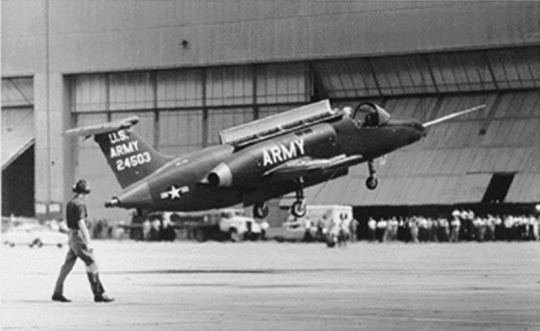
-The XV-4A Hummingbird during testing. | Photo: Lockheed/US Army
The second prototype was built to a different standard, designated the XV-4B. The two JT-12 engines and the diverter system were replaced by six GE J85 turbojets, four set vertically to act as lift jets and two set horizontally to provide forward thrust. The XV-4B was slightly larger than the A model, and much heavier, the A had an empty weight of just under 5,000lbs and a gross of 7,200lbs versus the B, which weighed 7,400lbs empty and almost 12,600lbs gross. The upgraded engines improved the thrust to weight ratio to 1.43, but the added weight reduced the top speed to 463mph. The XV-4B also had an improved stability system, giving the pilot a better feel for the controls and more authority in a hover. The aircraft was rolled out on 4 June 1968 and soon began a short builder's trial before being shipped to Edwards AFB for flight testing conducted by North American Rockwell on behalf of the USAF. The B model was lost in a crash on 14 March 1969, although the pilot was able to escape in the ejection seat. The Army canceled the program at this point, seeing no further development in the future.
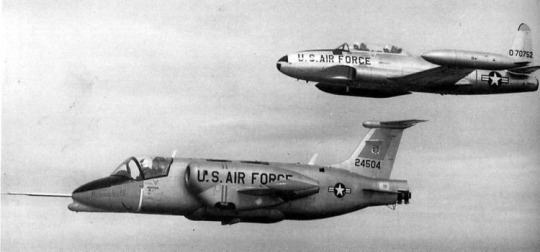
-The XV-4B, with a T-33 chase plane, at Edwards AFB. | Photo: USAF
RYAN VZ-11 VERTIFAN In 1959 Ryan Aeronautical, who had been working on the X-13 Vertijet, a jet plane that could VTOL onto a dedicated platform, for the USAF, proposed an aircraft operating on a different principal, ducted fans, to the US Army. The Army in turn awarded a contract for two VZ-11-RY Vertifans, redesignated the XV-5A in 1962.

-Orthograph of the XV-5. | Illustration: Aeroplane Monthly
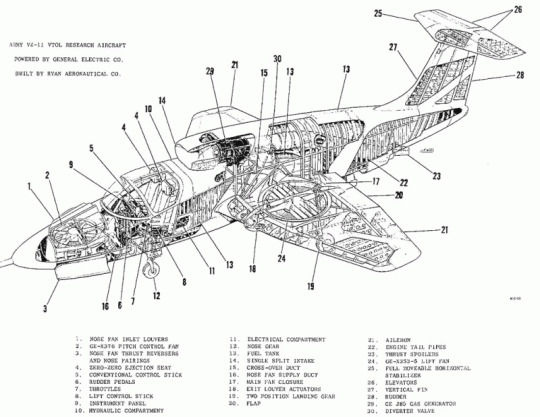
-Labeled cut-away drawing of the Vertifan. | Illustration: Ryan Aeronautical
The Vertifans were 44 feet 6 inches long, with a wingspan of 29 feet 10 inches and a height of 14 feet 9 inches. Empty weight was just over 7,500lbs, while max takeoff weight was 13,600 conventionally and 12,300lbs while employing VTOL. Two General Electric J85s, rated at 2,600lbs each, propelled the aircraft forward, as well as driving the two GE X353-5 ducted fans in either wing, which measured 62.5 inches in diameter, as well as a smaller 36in fan in the nose. While operating in lift-fan mode, the engines produced 16,000lbs total thrust, three times that available from the turbojets alone. Cross-ducts provided a measure of safety, as either jet could dive the whole system in case of a failure. Louvered vanes underneath the fans provided yaw and roll control, while pitch control was effected via engine power settings. Traditional flying surfaces on the wing and T-tail provided control in conventional flight. The vanes underneath the fans as well as doors on top could be closed during normal flight to reduce drag. Additionally, the narrow-track landing gear was retractable. The wings of the XV-5 were vaguely based on the delta wing of the A-4 Skyhawk, and the intake duct for the engines was placed above and behind the two place cockpit.
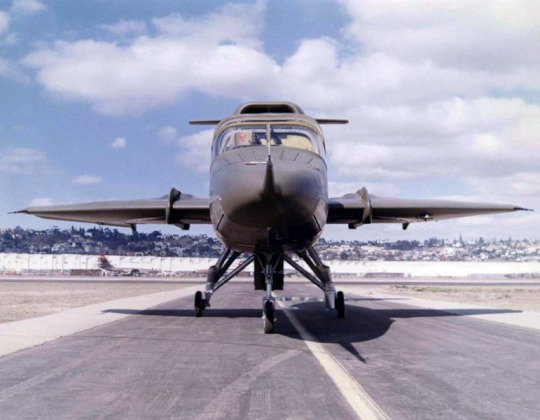
-This photo, from the front and underneath the XV-5A, shows the narrow track of the landing gear. | Photo: Ryan Aeronautical
While the XV-5s were under construction the 15 pilots chosen, known as the "XV-5A Fan Club", were trained on a flight simulator provided by Ryan. The first Vertifan was rolled out in early 1964, with the maiden flight taking place on 25 May. Testing progressed, but uncovered numerous issues with the aircraft. The J85s produced too little thrust, giving the XV-5 poor acceleration during conventional takeoffs. During hovers, the control system provided too little yaw authority, and opening and closing the louvers and doors caused abrupt changes in pitch. There were also issues with the opening mechanisms, which proved to have poor reliability. The first Vertifan crashed during a public flight demonstration on 27 April 1965, killing Ryan test pilot Lou Everett. The post-crash investigation determined that the Everett had inadvertently tripped the conventional-to-vertical conversion switch, which was mounted on the collective. The switch automatically triggered the horizontal stabilizer to force the nose down almost 45°, a maneuver intended to compensate for the lift generated by the nose fan. Everett initiated his low-altitude ejection seat, but it malfunctioned and he was killed.
The second Vertifan was modified, with the conversion switch, now a lift-lock toggle, being moved to the instrument panel. Trials resumed, with an emphasis on turning the plane into a search-and-rescue vehicle. A winch and rescue sling was added, with the idea being that a downed airman could be retrieved and winched into a compartment behind the pilot. During a test of the system on 5 October 1966, the sling was ingested into one of the wing fans. The pilot, Major David H. Tittle, ejected, but too late, and died of internal injuries he sustained when the seat impacted the ground. The plane was salvaged and rebuilt into the XV-5B, which featured fixed landing gear which was more widely spaced, improved controls, and improved lift and thrust capability. The Army, having lost interest in VTOL research in general and the Vertifan in particular, abandoned the project. The XV-5B was turned over to NASA for further testing, and was delivered in the agency's paint scheme of overall white with blue trim.
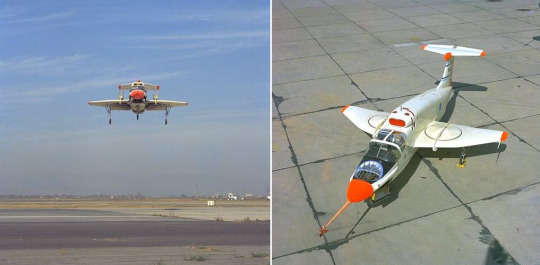
-Composite photo of the XV-5B in flight and on the runway. | Photo: NASA
The XV-5B continued to be flow by NASA until 1971, providing much data on lift fan technology. General Electric took some of the lessons learned from the J85 engines and X353 fans and adapted them into the earliest high-bypass turbofan engines, the TF39, which powered the C-5A Galaxy. The Verifan was the last manned aircraft produced by Ryan, which pivoted into unmanned aircraft in the mid 1960s. The XV-5B, still in its white NASA paint scheme, was retired and placed on display at the US Army Aviation Museum at Ft Rucker.
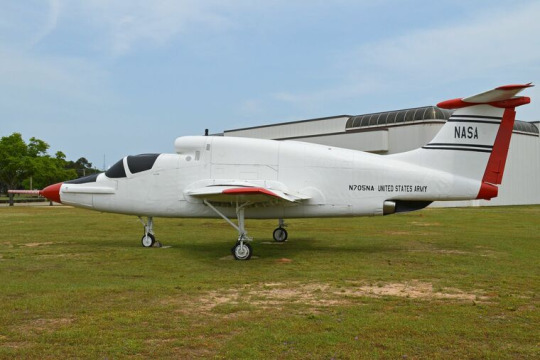
-The XV-5B Vertifan, on display outside the US Army Aviation Museum. | Photo: Alan Wilson.
SUMMARY The Army ceased supporting VTOL research during the late 1960s. Budgets were stretched by the war in Vietnam, and development of more capable helicopters like the UH-1, AH-1 and CH-47, resulted in a diminished interest in alternative technologies.
#airplane#aircraft#airplanes#vtol#us army#naca#nasa#the fifties#the sixties#the 50s#the 60s#Cold War#coldwar#cold war history#ryan aircraft#lockheed#Fairchild republic#boeing vertol#Aviation#avgeek#vstol#stovl
3 notes
·
View notes
Text
Tesla Cybertruck Production Delayed as Competitors Emerge in EV Pickup Truck Market; General Motors Rolls Out Chevy Blazer EV

Tesla Cybertruck faces production delays amid increasing competition in the EV pickup truck market, while General Motors launches the Chevy Blazer EV When Tesla (TSLA) unveiled its groundbreaking Cybertruck electric pickup prototype in November 2019, it captured the imagination of fans, drawing parallels to iconic vehicles from "Mad Max" and "Blade Runner." Inspired by the James Bond film "The Spy Who Loved Me" and the amphibious Lotus Esprit S1, CEO Elon Musk aimed to revolutionize the automotive industry with this futuristic electric truck. Initial Enthusiasm and Production Challenges: The Cybertruck prototype generated immense excitement, with Tesla receiving a staggering 187,000 pre-orders within five days of its introduction. However, unforeseen hurdles, including the global COVID-19 pandemic, disrupted Tesla's production plans, leading to delays. Initially planned for production in 2021, Cybertruck's timeline had to be revised due to unforeseen circumstances. In July 2022, Musk expressed his optimism about starting Cybertruck production in mid-2023. In January 2023, he provided further updates, mentioning that production would occur "later this year." However, in April, Musk adjusted the timeline again, stating that the electric pickup would be delivered by the end of the third quarter, specifically in late September. During the extended wait for the Cybertruck, Tesla has witnessed the emergence of several competitors in the electric pickup truck market. Prominent rivals include Ford's F-150 Lightning, General Motors' Chevy Silverado, and Rivian's R1T. Other major automakers, such as Stellantis, have also announced plans to introduce their own all-electric pickup trucks in the months following the anticipated release of the Cybertruck.
Expanding Rivalry in the EV SUV Segment
Beyond the electric pickup truck market, Tesla and Ford find themselves engaged in fierce competition within the electric SUV segment. Tesla's Model Y offers various configurations, including the basic all-wheel drive starting at $47,740, the Long Range at $50,490, and the Performance at $54,490. Ford's 2023 Mustang Mach-E Select starts at $42,995, while the Premium version is priced at $46,995. Customers seeking higher-end options can choose the California Route 1 for $56,995 or the GT for $59,995. General Motors aims to make an impact in the SUV/crossover market with its electric version of the iconic Chevy Blazer. Originally introduced in 1969 with an internal combustion engine, the Chevy Blazer EV now targets environmentally conscious consumers. The manufacturing of the 2024 Chevy Blazer EV began on June 26, 2023, at GM's Ramos Arizpe plant in Mexico. The Chevy Blazer EV lineup features four distinct models catering to diverse consumer preferences. The entry-level 1LT starts at $44,995, followed by the 2LT at $47,595. The sporty RS model begins at $51,995, while the high-performance SS variant is priced at $65,995. In addition, General Motors plans to introduce a Police Pursuit Vehicle based on the Chevy Blazer EV platform.
Expectations and Noteworthy Features
GM's Chevy Blazer EV models offer impressive features, including a range of up to 320 miles on a full charge and various front-, rear-, and all-wheel-drive configurations. The vehicles also boast a 17.7-inch diagonal customizable infotainment touchscreen, full LED exterior lighting, and Super Cruise hands-free driving technology. Scott Bell, vice president of Chevrolet, expressed his enthusiasm for the 2024 Blazer EV, stating, "The 2024 Blazer EV sets a new tone for electric SUVs, with options and intuitive technologies that position Chevy as a leader in one of the fastest-growing EV segments." As the highly anticipated Tesla Cybertruck faces production delays, competitors are seizing the opportunity to enter the electric pickup truck market. Tesla's rivals, including Ford, General Motors, and Rivian, have introduced their own electric pickup truck models, intensifying the competition. Meanwhile, in the EV SUV segment, Tesla and Ford continue to vie for market dominance, while General Motors' Chevy Blazer EV makes its debut, offering consumers an eco-friendly SUV option with advanced features and impressive range capabilities. Read the full article
0 notes
Text
Tojan Horse: Take A Ride In The One Pontiac Tojan That Had Sincere Supercar Power!
The Pontiac Tojan is one of those cars that you hear about, see, and immediately write off as a kit car…especially if you see one with the rear spoiler that looks to have been stolen off of a similar-vintage Lamborghini Countach. Depending on which angle you view a Tojan from, you get hints of Ferrari BB LM, Bricklin SV-1, and KITT on a heroic dose of whatever kind of drug you happened to ingest at the moment the famous talking car goes into it’s Turbo Boost mode. In reality, most of the 130-something special order Pontiacs were powered by either a 305 or 350 with appropriate GM sourced transmission. Except one.
This wing-less red example is purported to be the prototype car, and it’s engine is no weak-suck small-block Chevrolet. I’ve been attempting to determine what the engine is that is actually in this particular car for the better part of a day now with no success…Carfection’s Alex Goy mentions a “boat engine”, and on the dyno sheet show, in tiny letters, you can see: Test Engine: 302 Cubic Inch Chevrolet V8. Take your pick: mountain motor from a boat or one of GM’s screamers being force-fed like a Christmas goose. Either way the dyno sheet for this monster from back in the day does not lie: pushing over 900 horsepower is eye-opening in 2019…imagine this mother in the mid-1980s! The automatic seems to have been beefed up to give it a fighting chance against numbers like that, though we do doubt it’s longevity even at full build.
I can’t say that I like the Tojan. All things considered, the visuals put me off badly…I feel like I’m looking at an overgrown Pontiac Fiero from 1988. But, a thought: the Corvette had RPO B2K, the Callaway Twin-Turbo option. Callaway Corvettes of the 1980s were bonafide monsters. With the SLP-modified 1992 Firehawk years off, wouldn’t it have made sense to have made a B2K-style variation of the Trans Am and Camaro and really give the Mustang faithful something to think about instead of a funky body kit? Ah, hindsight, so sweet when applied correctly.
youtube
The post Tojan Horse: Take A Ride In The One Pontiac Tojan That Had Sincere Supercar Power! appeared first on BangShift.com.
Tojan Horse: Take A Ride In The One Pontiac Tojan That Had Sincere Supercar Power! published first on https://medium.com/@SinaCarRemovals
2 notes
·
View notes
Video
youtube
'05 Ford GT - walkaround
'05 Ford GT - walkaround The '05 Ford GT is a mid-engine two-seater sports car manufactured and marketed by American automobile manufacturer Ford for the 2005 model year in conjunction with the company's 2003 centenary. The second generation Ford GT became available for the 2017 model year. The GT recalls Ford's historically significant GT40, a consecutive four-time winner of the 24 Hours of Le Mans (1966–1969), including a 1-2-3 finish in 1966. The Ford GT began life as a concept car designed in anticipation of the automaker's centennial year and as part of its drive to showcase and revive its "heritage" names such as Mustang and Thunderbird. At the 2002 North American International Auto Show, Ford unveiled a new GT40 Concept car. Camilo Pardo, the then head of Ford's "Living Legends" studio, is credited as the chief designer of the GT and worked under the guidance of J Mays. Carroll Shelby, the original designer of the Shelby GT 500, was brought in by Ford to help develop the GT; which included performance testing of the prototype car. While under development, the project was called Petunia. The GT is similar in outward appearance to the original GT40, but is bigger, wider, and most importantly 4 in (100 mm) taller than the original's 40 in (100 cm) overall height; as a result, a potential name for the car was the GT44. Although the cars are visually related, structurally, there is no similarity between the modern GT and the 1960s GT40 that inspired it. After six weeks from the unveiling of the GT40 concept, Ford announced a limited production run of the car. Three pre-production cars were shown to the public in 2003 as part of Ford's centenary celebrations, and delivery of the production version called simply the Ford GT began in the fall of 2004. As the Ford GT was built as part of the company's 100th anniversary celebration, the left headlight cluster was designed to read "100". A British company, Safir Engineering, who built continuation GT40 cars in the 1980s, owned the "GT40" trademark at that time. When production of the continuation cars ended, they sold the excess parts, tooling, design, and trademark to a small Ohio based company called Safir GT40 Spares. This company licensed the use of the "GT40" trademark to Ford for the initial 2002 show car. When Ford decided to put the GT40 concept to production stage, negotiations between the two firms failed as Ford did not pay the US$40 million the owners of the name demanded. Thus, the production cars are simply called the GT.
#FordGT #GT #2005FordGT
0 notes
Photo

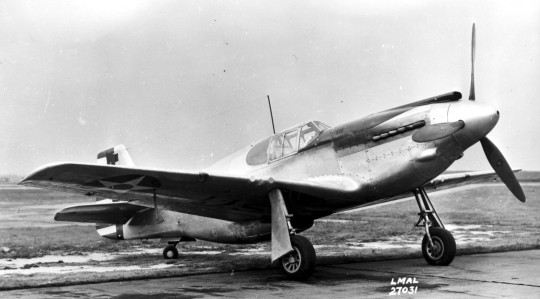
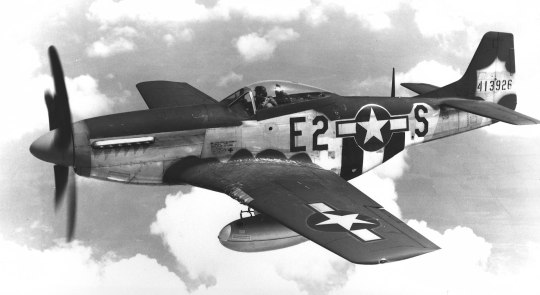
The North American Aviation P-51 Mustang is an American long-range, single-seat fighter and fighter-bomber used during World War II and the Korean War, among other conflicts. The Mustang was designed in April 1940 by a team headed by James Kindelberger[5] of North American Aviation (NAA) in response to a requirement of the British Purchasing Commission. The Purchasing Commission approached North American Aviation to build Curtiss P-40 fighters under license for the Royal Air Force (RAF). Rather than build an old design from another company, North American Aviation proposed the design and production of a more modern fighter. The prototype NA-73X airframe was rolled out on 9 September 1940, 102 days after the contract was signed, and first flew on 26 October.[6][7]
The Mustang was designed to use the Allison V-1710 engine, which had limited high-altitude performance in its earlier variants. The aircraft was first flown operationally by the RAF as a tactical-reconnaissance aircraft and fighter-bomber (Mustang Mk I). Replacing the Allison with a Rolls-Royce Merlin resulted in the P-51B/C (Mustang Mk III) model, and transformed the aircraft's performance at altitudes above 15,000 ft (4,600 m) (without sacrificing range),[8] allowing it to compete with the Luftwaffe's fighters.[9] The definitive version, the P-51D, was powered by the Packard V-1650-7, a license-built version of the two-speed, two-stage-supercharged Merlin 66, and was armed with six .50 caliber (12.7 mm) AN/M2 Browning machine guns.[10]
From late 1943, P-51Bs and P-51Cs (supplemented by P-51Ds from mid-1944) were used by the USAAF's Eighth Air Force to escort bombers in raids over Germany, while the RAF's Second Tactical Air Force and the USAAF's Ninth Air Force used the Merlin-powered Mustangs as fighter-bombers, roles in which the Mustang helped ensure Allied air superiority in 1944.[11] The P-51 was also used by Allied air forces in the North African, Mediterranean, Italian, and Pacific theaters. During World War II, Mustang pilots claimed to have destroyed 4,950 enemy aircraft.[nb 1]
At the start of the Korean War, the Mustang, by then redesignated F-51, was the main fighter of the United States until jet fighters, including North American's F-86, took over this role; the Mustang then became a specialized fighter-bomber. Despite the advent of jet fighters, the Mustang remained in service with some air forces until the early 1980s. After the Korean War, Mustangs became popular civilian warbirds and air racing aircraft.
https://en.wikipedia.org/wiki/North_American_P-51_Mustang
0 notes
Text

Did you know ???
𝐁𝐚𝐜𝐤 𝐢𝐧 𝟏𝟗𝟔𝟗, 𝐅𝐨𝐫𝐝 𝐛𝐮𝐢𝐥𝐭 𝐚 𝐨𝐧𝐞-𝐨𝐟𝐟 𝐩𝐫𝐨𝐭𝐨𝐭𝐲𝐩𝐞 𝐭𝐡𝐚𝐭 𝐟𝐥𝐢𝐩𝐩𝐞𝐝 𝐭𝐡𝐞 𝐬𝐜𝐫𝐢𝐩𝐭 𝐨𝐧 𝐭𝐡𝐞 𝐜𝐥𝐚𝐬𝐬𝐢𝐜 𝐁𝐨𝐬𝐬 𝟒𝟐𝟗 𝐌𝐮𝐬𝐭𝐚𝐧𝐠.
Known internally as the LID Mustang—short for Low Investment Drivetrain—this project aimed to fix the production model’s notorious weight distribution problem.
Instead of packing the heavy Boss 429 V8 up front, Ford’s engineers reversed the engine and mounted it over the rear wheels.
A Clever, Cost-Effective Makeover
Working with their Special Vehicles unit and a local Detroit skunkworks group called Kar Kraft, Ford took a standard Boss 429 engine paired with a C6 automatic transmission and installed it in a custom, removable rear subframe. A specially built transfer case rotated the power 180 degrees, feeding a modified 9-inch rear axle. This clever setup shifted the weight balance from a 60/40 front-to-rear split to a more promising 40/60, reducing wheelspin and potentially improving handling.
An Experiment That Didn’t Take Off
Despite the improved weight distribution, the mid-engine layout didn’t deliver a significant performance boost. With little more than reduced wheelspin to show for it, Ford decided not to pursue the idea further. At one point, reports in Motor Trend suggested the lone prototype was headed for the crusher at a Detroit-area salvage yard.
A Mysterious Disappearance
Recent whispers from credible Ford insiders, however, have added a twist to the tale. After its test program, the LID Mustang was parked at the Dearborn Proving Grounds with other test mules. Rather than being scrapped, the car seemingly vanished—leading some to believe it might be hidden away in a private garage somewhere in Dearborn or Allen Park, waiting for its moment to reemerge.
This story of wild innovation remains one of Ford’s most intriguing “what if” moments—a reminder that sometimes even the boldest experiments can slip quietly into legend.
162 notes
·
View notes
Photo
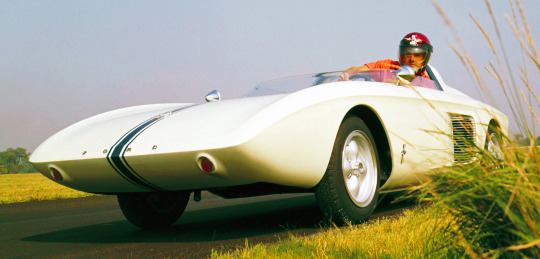
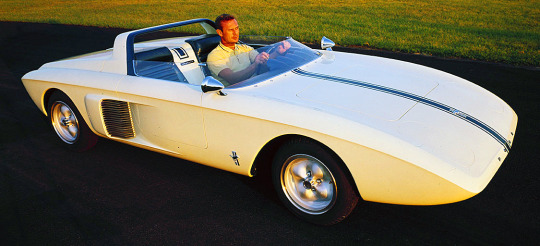
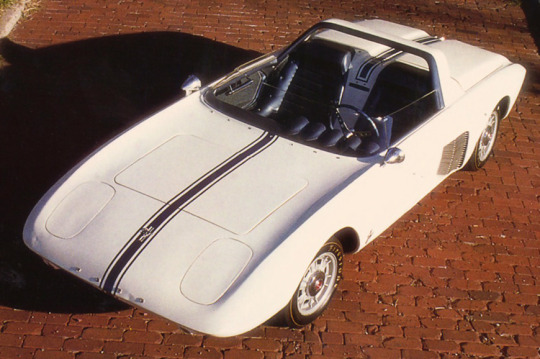
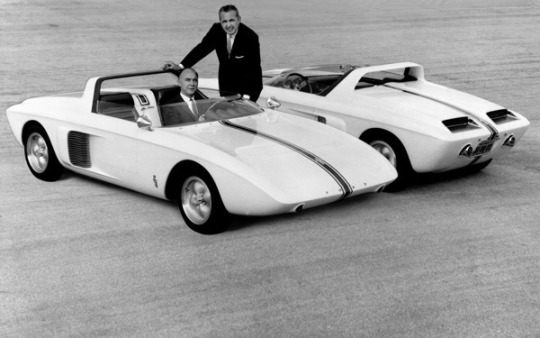
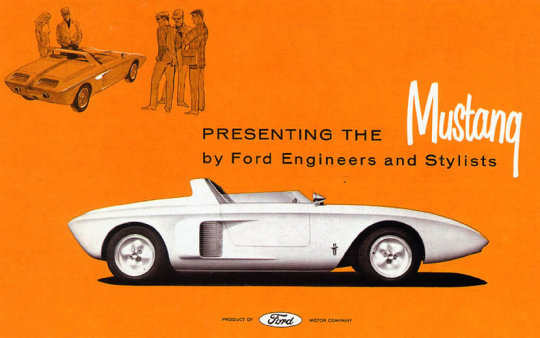
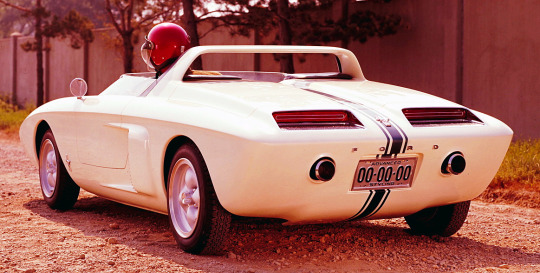
Ford Mustang Concept, 1962. A mid-engined speedster prototype with a V4 engine that was created when Lee Iacocca was CEO of Ford. In fact it was this concept that developed into the GT40 whilst the Mustang name was transferred to the Falcon-based sports coupé that Iacocca had also commissioned
#Ford#Ford Mustang Concept#concept#prototype#1962#mid-engine#V4#speedster#1960s#Lee Iacocca#design study
193 notes
·
View notes
Text
2019 SEMA Cruise Highlights
New Post has been published on https://coolcarsnews.com/2019-sema-cruise-highlights/
2019 SEMA Cruise Highlights
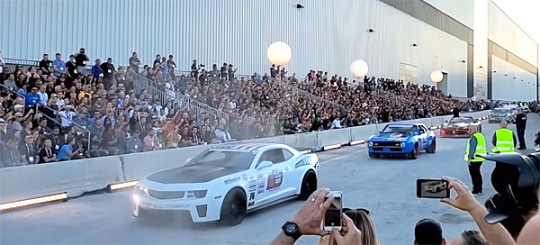
By Dave Ashton
When it comes to giving an overview of all the awesome performance vehicles at the 2019 SEMA show, there’ s nothing like simply sitting back and watching the SEMA cruise or even a bunch of highlights. The particular SEMA cruise lets you see the most of vehicles coming in and out of the display in quick succession. No in-depth detail on each vehicle, but just the same, great eye candy.
In this regard, the below videos include the SEMA cruise, along with a long video of the cruise leading up to the particular Ignited after party.
Leaving SEMA cruise component one [embed]https://youtube.com/watch?v=IQzWhQcWikM[/embed]
Leaving SEMA cruise part 2 [embed]https://youtube.com/watch?v=_jUGzVxx2Nw[/embed]
SEMA cruise to Ignited after celebration [embed]https://youtube.com/watch?v=dfraEZ0rOlM[/embed]
As for the most recent and greatest American vehicles plus muscle cars at the show, the particular 2020 C8 Chevrolet Corvette Transformable was on display. By convertible, this means a hardtop version, as the smooth top version has been ditched. A good LT2 6. 2-liter V8 using a base level 495 horsepower can come from the now supercar and on preliminary impressions, this is one tasty quantity.
Another tasty providing from the bow tie guys, is available in the form of the 2020 Chevrolet Corvette C8. R. This is the first appropriate mid-engined Corvette racer, which was shown this year with a silver and yellow-colored livery, inspired by the Aerovette plus CERV of old.
Ford were also there revealing a few of their offerings in the form of the particular Ford and Webasto Lithium Mustang Prototype . Its stated to have an equivalent associated with 900 horsepower from a 800-volt Webasto battery system, but being completely electric, we’ re burying our own heads in the sand and deceiving this one doesn’ t exist.
Onto happier notes, Ca Pony Cars have souped upward a 2019 GT Fastback, to generate the ultimate GT. A Ford Overall performance supercharger kit has been added, together with a Borla exhaust system and custom sections.
There was also the particular Shelby GT500 Dragon Snake Idea, which is a step up from the Shelby GT500, which produces over 800 hp, with loads of upgrades and the outstanding feature being a gigantic rear side.
Lots more to come through SEMA in the coming days, therefore stay tuned.
The particular post 2019 SEMA Cruise Highlights appeared first on Muscle Vehicle .
0 notes
Video
youtube
05 Ford GT - POV Drive The '05 Ford GT is a mid-engine two-seater sports car manufactured and marketed by American automobile manufacturer Ford for the 2005 model year in conjunction with the company's 2003 centenary. The second generation Ford GT became available for the 2017 model year. The GT recalls Ford's historically significant GT40, a consecutive four-time winner of the 24 Hours of Le Mans (1966–1969), including a 1-2-3 finish in 1966. The Ford GT began life as a concept car designed in anticipation of the automaker's centennial year and as part of its drive to showcase and revive its "heritage" names such as Mustang and Thunderbird. At the 2002 North American International Auto Show, Ford unveiled a new GT40 Concept car. Camilo Pardo, the then head of Ford's "Living Legends" studio, is credited as the chief designer of the GT and worked under the guidance of J Mays. Carroll Shelby, the original designer of the Shelby GT 500, was brought in by Ford to help develop the GT; which included performance testing of the prototype car. While under development, the project was called Petunia. The GT is similar in outward appearance to the original GT40, but is bigger, wider, and most importantly 4 in (100 mm) taller than the original's 40 in (100 cm) overall height; as a result, a potential name for the car was the GT44. Although the cars are visually related, structurally, there is no similarity between the modern GT and the 1960s GT40 that inspired it. After six weeks from the unveiling of the GT40 concept, Ford announced a limited production run of the car. Three pre-production cars were shown to the public in 2003 as part of Ford's centenary celebrations, and delivery of the production version called simply the Ford GT began in the fall of 2004. As the Ford GT was built as part of the company's 100th anniversary celebration, the left headlight cluster was designed to read "100". A British company, Safir Engineering, who built continuation GT40 cars in the 1980s, owned the "GT40" trademark at that time. When production of the continuation cars ended, they sold the excess parts, tooling, design, and trademark to a small Ohio based company called Safir GT40 Spares. This company licensed the use of the "GT40" trademark to Ford for the initial 2002 show car. When Ford decided to put the GT40 concept to production stage, negotiations between the two firms failed as Ford did not pay the US$40 million the owners of the name demanded. Thus, the production cars are simply called the GT. #FordGT #2005FordGT #Ford
1 note
·
View note
Text

Evolution of a Legend: The Ford GT40's Origins in the Mustang-I
Before partnering with Lola on the GT Mk6 in August 1963, Ford's vision for the GT40 was heavily influenced by the sleek design of the Mustang-I. The prototype Ford GT's exterior was essentially based on the Mustang-I, showcasing a striking resemblance between the two. Notice the date on the picture.
As the project progressed, Ford opted to merge the best of both worlds. They took the redesigned Lola GT Mk6 chassis and wrapped the Mustang-I-inspired body around it, ultimately giving birth to the iconic Ford GT40. This fusion of design and engineering expertise would go on to create a racing legend.
TIMELINE:
October 7, 1962 - Mustang at Watkins Glen
October 20, 1962 - Mustang at Laguna Seca
October 26, 1962 - Lola Mk6 showed up incomplete at the London Car Show
January 1963 - Lola Mk6 first shown at UK Olympia Racing Car Show. Showed up three days late and incomplete
Feb 1963 - Enzo Ferrari sends Ford an offer
May 11, 1963 - The silver Mk6 was the first MK6 GT to be raced, entering two races in May of 1963
May 22, 1963 - Ferrari backed out of deal w/Ford
June 1963 - High Performance and Special Models Operation Unit was formed and a basic design was made
June 12, 1963 - GT Program book, circulated internally on June 12th, just 21 days after Ferrari ended deal
June 19, 1963 - the first GT40 clay model is photographed
July 1963 - Advanced Concept Department- Special Vehicle Activity (SVA) was formed
July 1963 - initially models were wind tunnel tested
July 4, 1963 - HFII was planning to be in Maranello signing a $10 million contract with Enzo Ferrari that would give Ford Motor Co. half the Italian sports car manufacturer
July 12, 1963 - full size clay model is pictured next to Corvette and Jaguar
July 17, 1963 - The decision to go with a european firm was approved
July 1963 - a selection of vendors was made by the end of July
August 1963 - a workshop was established in Broadley’s garage in Bromley, south of London
August 1963 - two Lola Mk6 were tested by Ford till early November
September 1963 - FAV opens in Slough, England
September 1963 - the center of activity was therefo removed from Dearborn to England, together with a nucleus of Ford engineers, car layouts, power pack components and full-size models.
October 4, 1963 - a Ford GT clay model is photographed outside at Ford's Design Studio in Dearborn
Oct 1963 - Design engineers were sent to England in mid October
October 23, 1963 - a Ford GT body is photographed outside with a Ford stripe on the rocker
Nov 1963 - The final shape models were sent to England in early November
Nov 1963 - Component testing was completed by the end of November
March 16, 1964 - first gt40 delivered
April 1st, 1964 the first prototype Ford GT was completed and photographed. The first 12 "prototype" vehicles carried serial numbers GT-101 to GT-112. Production GT40s Mk I and Mk II began with GT40P/1000.
April 15 , 1964 - GT40 time trials in Le Mans in mid-April,
After disappointing race results, the engineering team was moved in 1964 to Dearborn, Michigan, USA, to design and build cars by its advanced developer, Kar Kraft.

70 notes
·
View notes
Photo
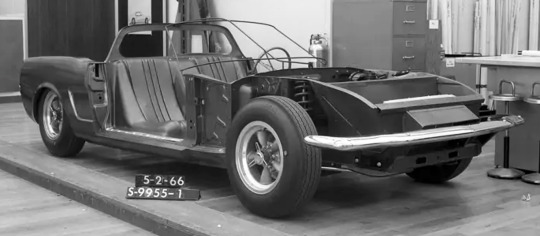
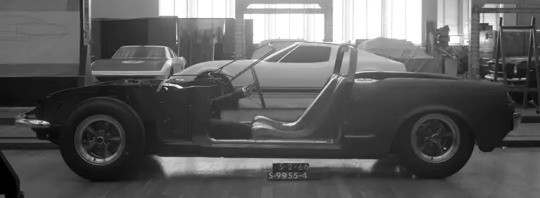
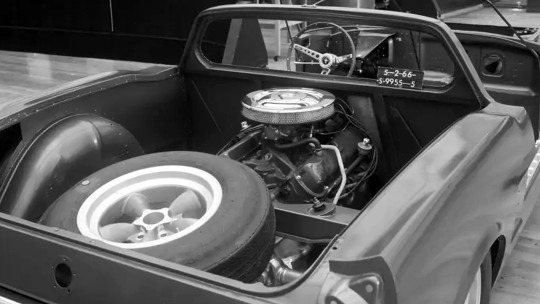
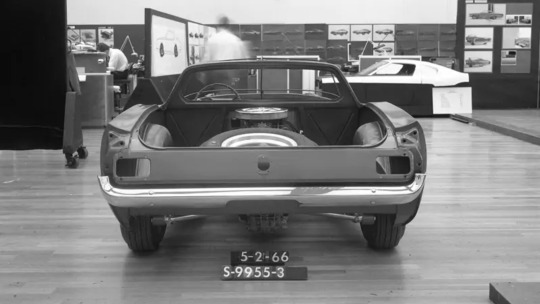
Ford Mustang Mid-engined Prototype, 1966. Ford Performance have appealed for information related to this “mystery” prototype for a Mustang with a small-block V8 mounted behind the front seats and the gearbox in-line behind it. The photographs (taken on May 2, 1966) were discovered in an archive, Ford have contacted multiple former Ford designers and experts but none of them are familiar with the vehicle. All that they've been able to determine is that the photos show the car in the "International Studio" at Ford's complex in Dearborn. It doesn't seem to be the Mach 2 concept, which used 1967 Mustang parts and a different front end construction, whereas this car has 1966 parts. If you have information about this car, send it to [email protected], if you can solve this mystery, Ford says it will provide a reward.
source
#Ford#Ford Mustang#Ford Mustang Mid-engined Prototype#prototype#experimental car#test vehicle#mid-engine#Ford V8#mystery mustang#Ford Performance#1966#1960s
129 notes
·
View notes
